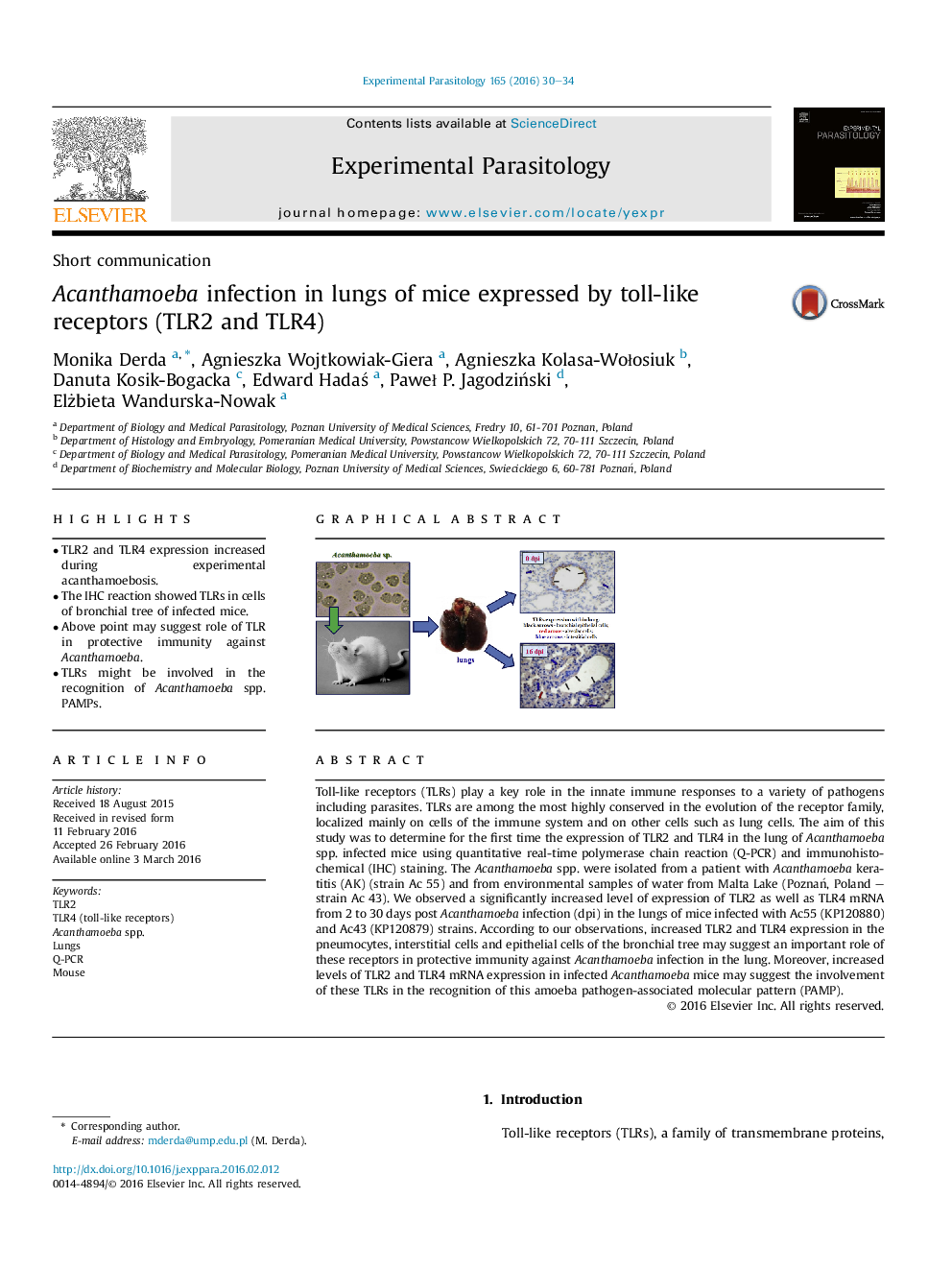| Article ID | Journal | Published Year | Pages | File Type |
|---|---|---|---|---|
| 4370960 | Experimental Parasitology | 2016 | 5 Pages |
•TLR2 and TLR4 expression increased during experimental acanthamoebosis.•The IHC reaction showed TLRs in cells of bronchial tree of infected mice.•Above point may suggest role of TLR in protective immunity against Acanthamoeba.•TLRs might be involved in the recognition of Acanthamoeba spp. PAMPs.
Toll-like receptors (TLRs) play a key role in the innate immune responses to a variety of pathogens including parasites. TLRs are among the most highly conserved in the evolution of the receptor family, localized mainly on cells of the immune system and on other cells such as lung cells. The aim of this study was to determine for the first time the expression of TLR2 and TLR4 in the lung of Acanthamoeba spp. infected mice using quantitative real-time polymerase chain reaction (Q-PCR) and immunohistochemical (IHC) staining. The Acanthamoeba spp. were isolated from a patient with Acanthamoeba keratitis (AK) (strain Ac 55) and from environmental samples of water from Malta Lake (Poznań, Poland – strain Ac 43). We observed a significantly increased level of expression of TLR2 as well as TLR4 mRNA from 2 to 30 days post Acanthamoeba infection (dpi) in the lungs of mice infected with Ac55 (KP120880) and Ac43 (KP120879) strains. According to our observations, increased TLR2 and TLR4 expression in the pneumocytes, interstitial cells and epithelial cells of the bronchial tree may suggest an important role of these receptors in protective immunity against Acanthamoeba infection in the lung. Moreover, increased levels of TLR2 and TLR4 mRNA expression in infected Acanthamoeba mice may suggest the involvement of these TLRs in the recognition of this amoeba pathogen-associated molecular pattern (PAMP).
Graphical abstractFigure optionsDownload full-size imageDownload as PowerPoint slide
